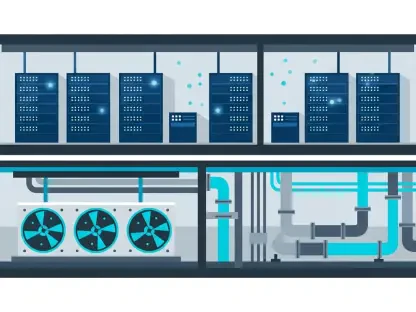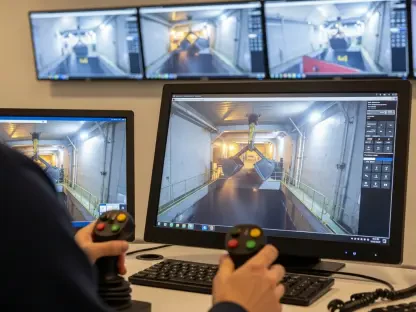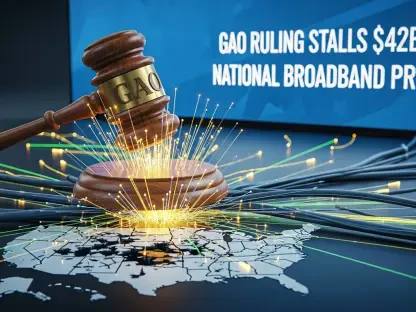In the contemporary telecommunications market, the convergence of 5G-Advanced, artificial intelligence (AI), and green technologies heralds a transformative epoch, revolutionizing network infrastructure and addressing emergent challenges. With these innovations, we find ourselves on the brink of a new age of connectivity, where the possibilities seem endless and the potential for advancement boundless. Our discussion with Li Xiaotong, Vice President of ZTE Corporation, reveals how these intertwined advancements are fostering industry-wide progress and setting the stage for the future of telecommunications.
The Integration of AI and Network Infrastructure
The integration of AI into network infrastructure is reshaping expectations and operational paradigms. As AI applications surge across various industries, they impose new demands on both network capabilities and infrastructures. Li highlights how the AI era compels a reimagining of network design. Notably, AI’s influence is twofold: it drives greater network traffic and influences network optimization and operations. This results in the need for networks that can handle increased data loads while also providing enhanced management and operational efficiency.
AI’s role in generative technologies especially underscores the requirement for robust, flexible, and intelligent networks. The elevation of edge computing capabilities, enhanced security measures, and sophisticated network management are essential to support the diverse range of AI-enabled applications effectively. ZTE is capitalizing on its expertise in 5G-Advanced technologies to tackle these challenges, embedding AI-native capabilities directly into network infrastructure. This integration facilitates intelligent resource allocation and predictive maintenance, creating self-optimizing systems capable of dynamically adapting to changing radio environments. By integrating AI at the core of network infrastructure, ZTE aims to redefine the operational landscape.
Network Applications Across Sectors
Li elaborates on the varying network requirements across consumer (B2C), business (B2B), and societal (B2X) applications. In B2C, the demand for immersive experiences like augmented reality (AR) and virtual reality (VR) is rising. These experiences require networks that deliver multi-gigabit speeds with ultra-low latency. ZTE is addressing this with its advanced massive MIMO technology and mmWave solutions, which demonstrate the capability to deliver peak data rates up to 10 Gbps in dense urban environments. This technological leap allows consumers to experience immersive content without the hindrance of latency.
ZTE’s innovative approach was exemplified at the 2024 Malaysia Games (SUKMA) in Sarawak. Utilizing their 5G-A wireless mobile broadcasting solution, ZTE enabled seamless wireless broadcasting of the event through Radio Televisyen Malaysia (RTM), showcasing the event with stable multi-camera wireless streaming. This feat demonstrated the potential application of advanced network technologies in delivering high-quality broadcast experiences, setting a new standard for live events.
In the B2B domain, the focus shifts to enabling Industry 4.0 and smart manufacturing, where industrial IoT and automated production lines necessitate networks with deterministic performance and ultra-high reliability. ZTE’s 5G-Advanced private network solutions address these needs by offering customized slicing capabilities and edge computing integration, ensuring mission-critical applications receive necessary resources and performance guarantees. With customized network slicing and enhanced edge computing, industries can benefit from tailored network solutions that meet their specific operational needs.
In the B2X sector, which encompasses broader societal applications such as smart cities and autonomous vehicles, the need for ubiquitous connectivity is paramount. ZTE’s approach involves a combination of advanced RAN solutions for terrestrial coverage, emerging non-terrestrial network (NTN) capabilities for remote and underserved areas, and integrated sensing and communication (ISAC) technologies. The ISAC solution, in particular, enhances waterway safety by preventing vessel collisions under poor visibility conditions, as demonstrated in Turkey with Türk Telekom, marking Europe’s first application of this technology. This innovation showcases the potential of advanced network solutions in addressing public safety concerns and improving quality of life.
Energy Efficiency and Sustainable Innovations
With increasing network demands comes the imperative for enhanced energy efficiency and sustainable operations. Li underscores ZTE’s commitment to green innovation, stating that energy efficiency is a critical factor in network economics. ZTE adopts a multifaceted approach incorporating hardware innovations, intelligent power management, and renewable energy integration. By prioritizing energy efficiency, ZTE seeks to minimize the environmental footprint of its network solutions while maintaining high performance standards.
The company’s latest radio units, built on the Super-N 2.0 platform, achieve energy efficiency gains by reducing remote radio unit (RRU) power consumption by up to 35% compared to industry standard levels. This reduction not only lowers operational costs for operators but also significantly decreases the carbon footprint of network operations. Enhanced energy efficiency is a vital step in ensuring the sustainability of network operations in an increasingly connected world.
Furthermore, ZTE employs AI-driven power management solutions that enable dynamic adjustments based on traffic patterns and network load, allowing substantial energy savings without compromising network performance. By shutting down or reducing power to underutilized network elements intelligently, ZTE achieves an optimized balance of performance and energy efficiency. This intelligent power management system ensures that network resources are used effectively, reflecting a commitment to sustainable practices.
Future Trends: Communication and Computing Integration
Towards the end of the discussion, Li shares a forward-looking vision where the convergence of communication and computing infrastructures becomes a defining trend. He emphasizes that the boundaries between traditional telecom networks and computing platforms are blurring. The industry is transitioning towards networks that not only transport data but also actively participate in processing and decision-making. This shifting paradigm points towards a future where networks are not just passive conduits but active participants in the data processing ecosystem.
ZTE’s 5G-Advanced Baseband Unit (BBU) exemplifies this convergence. Described as a “novel infrastructure,” it is hardware-ready for communication and computing integration. By enhancing site computing power and enabling inter-site computing power sharing, ZTE seeks to establish a flexible foundation for future services and applications. This integrated approach ensures that future networks will be more adaptable and capable of meeting diverse application needs.
Li concludes by stressing that navigating the AI era successfully requires a holistic approach combining cutting-edge hardware, intelligent software, and sustainable practices. The goal was not merely to build faster networks but to create smarter, more efficient, and adaptable infrastructures capable of evolving with the rapidly changing demands of digital society. This vision of the future underscores the potential for remarkable advancements in connectivity, driven by the seamless integration of AI, 5G technology, and sustainable practices.
Conclusion
In today’s telecommunications landscape, the blending of 5G-Advanced technology, artificial intelligence (AI), and green initiatives marks the dawn of a transformative era. This revolution in network infrastructure is poised to tackle new challenges with innovative solutions, leading us into an age of unparalleled connectivity where opportunities for progress and development appear limitless. Our conversation with Li Xiaotong, Vice President of ZTE Corporation, sheds light on how these interconnected advancements are driving industry-wide growth and setting the groundwork for the future of telecommunications. As these technologies continue to evolve and integrate, they are not only enhancing the efficiency and capabilities of communication networks but also promoting sustainable practices. This convergence signifies not just technological progress but a holistic shift towards smarter, more eco-friendly, and resilient networks, promising a future where seamless connectivity is the norm and the potential for innovation is boundless.









